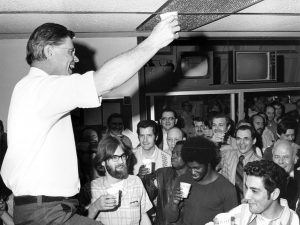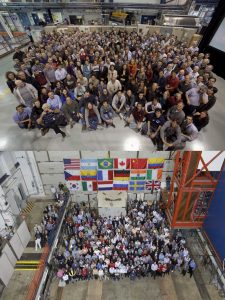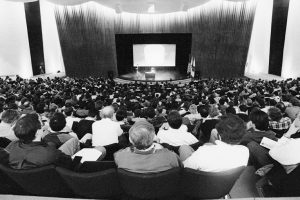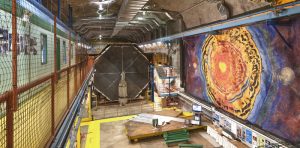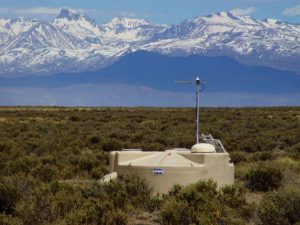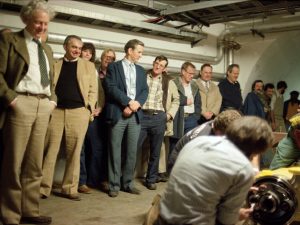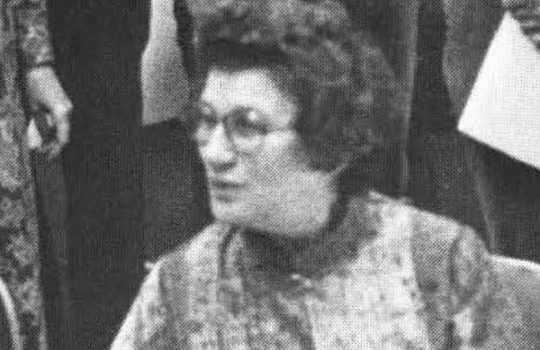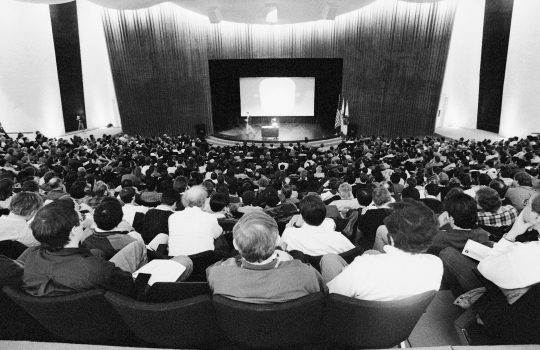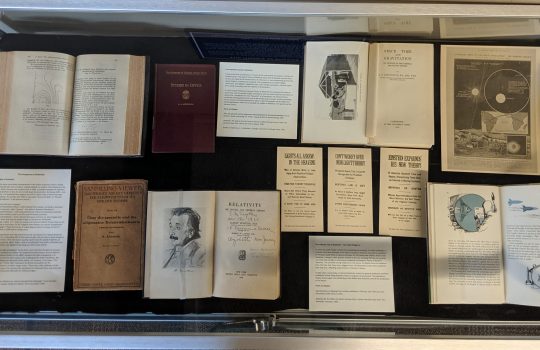In March, Fermilab saw the installation of its final Tevatron magnet, the start of MINOS and Tevatron Run II operations, and the groundbreaking for the Main Injector. Read on for more March milestones.
March 1, 1972: Accelerator reaches design energy
After years of design and construction, the NAL Main Ring achieved its design energy of 200 GeV on March 1, 1972, ahead of schedule and under its authorized $250 million budget. It quickly surpassed that energy goal, reaching 300 GeV on July 16, 1972, and 500 GeV on May 14, 1976.
March 1, 2001: Tevatron collider Run II begins
Tevatron Collider Run II began on March 1, 2001. This run began after the completion of upgrades to the accelerator complex that increased the energy of the particle collisions by 10 percent, ultimately reaching about 2 TeV, and the completion of the Main Injector, which greatly increased the number of collisions. This allowed CDF and DZero to observe 20 times the number of collisions they saw during Run I.
March 2, 1995: Discovery of the top quark
On March 2, 1995, CDF and DZero scientists announced the discovery of the top quark, the last remaining quark predicted by the Standard Model. Finding this particle had been one of the primary goals of the Tevatron Run I.
March 4, 2005: MINOS begins operation
MINOS, Fermilab’s first long-baseline neutrino experiment, officially began operating on March 4, 2005. It used the lab’s new NuMI beam and two detectors, one at Fermilab, near the source of the neutrinos, and another 450 miles away, in the Soudan Mine in northern Minnesota. In Fermilab’s tradition of blending art and science, the detector hall is decorated with a mural by artist Joseph Giannetti. MINOS completed its run on June 29, 2016.
March 17, 1999: Pierre Auger Observatory groundbreaking
The Pierre Auger Observatory, first conceived in 1992, is an international collaboration operating an array of detectors in Argentina for detecting cosmic rays. It broke ground in 1999 and began operating in 2003.
March 18, 1983: Last Tevatron magnet installed
As early at the summer of 1967, lab director Robert Wilson had talked about the possibility of one day upgrading the Main Ring with a more powerful superconducting accelerator and introducing a colliding beams program. The design effort for this “Energy Doubler” officially began in September 1972. The Department of Energy authorized the construction of this superconducting accelerator on July 5, 1979, and on March 18, 1983, the lab installed the final magnet in what would come to be known as the Tevatron.
March 22, 1993: Main Injector groundbreaking
The lab broke ground for the Main Injector on March 22, 1993. This new accelerator would upgrade Fermilab’s accelerator complex by replacing the Main Ring, which up until that time was used to inject protons into the superconducting accelerator of the Tevatron

